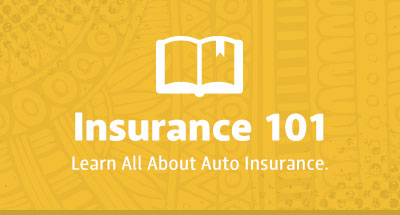Tips for How To Avoid Drowsy Driving
Spring has sprung, and with the change of the seasons comes a change in our sleeping habits. Daylight Savings Time has gifted us with a whole ‘nother hour of the standard day in which to play, work, and maybe even catch up on some much-needed rest. But the shift in our biological clock, or our “circadian rhythm”, can also have disastrous effects on our sleep cycle that can impact our everyday lives.
Sleep deprivation results in cognitive and behavioral changes that can contribute to everything including automobile crashes, poor work/school performance, and many more long-term physical and mental health concerns. In the interest of public safety, Illinois Vehicle has composed a list of the dangers of drowsy driving and a few choice, common sense safety tips for drivers new and old.
What is Drowsy Driving?
Drowsy driving is more than falling asleep at the wheel – it’s an affliction of multiple adverse effects (poor diet, irregular sleep patterns, inordinate work schedule, etc.) that combine to create a state of profound, often life-threatening impairment while driving. The condition of drowsy driving mirror that of alcohol impairment, resulting in slower reaction times, impaired attention span, mental processing speed, judgment, and decision-making. The effects of drowsiness can vary depending on the accumulation of one’s sleep debt, from less than six hours across one night to a total absence of sleep across multiple nights.
Fatigue can be an everyday affliction in the average life of a working American. Whether it’s lack of sleep from a newborn baby waking every couple of hours, a late or long work shift, a raucous night on the town, or a long haul drive to the in-laws – no matter the cause, the outcome can be the same. Impaired cognition, a great susceptibility to motor vehicle crashes, workplace accidents, and long-term health consequences. In a 24/7 society, with an emphasis on work, exorbitant commute times, and exponential advancements in technology, many people do not get bare minimum of sleep they need to function. Effectively dealing with the drowsy-driving problem requires fundamental changes to societal norms and especially attitudes about drowsy driving.
Nearly six thousand lives are lost each year to collisions brought about through drowsy driving. One in Four drivers (est. 130 million people) admit to having falling partially or entirely asleep behind the wheel. Fifty-five percent of drowsy driving crashes are caused by drivers under the age of 25, between the hours of midnight and 6AM and 2 and 4PM, and often by drivers who drive alone and are known for irregularly using their seatbelts.
Tip #1: Get Plenty Sleep Before Operating a Vehicle
This one is a no-brainer. The benefit of a good night’s rest, or even the occasional afternoon nap, cannot be overstated. A day spent without a minimum of six hours can result in sluggish reaction time, impaired cognitive function, and an irritable disposition. Successive sleep debt can cause even more debilitating effects the longer the period of deprivation.
The risk of being involved in a safety-critical event are calculated to be at their highest within the first hour of driving. This statistic is likely attributed to the effects of sleep inertia which occur shortly after waking from sleep. This risk is especially pressing for truck drivers, a job which demands driving in at most eleven-hour increments and “working” up to fourteen. The importance of adequately scheduling rest in accordance with one’s sleep cycle has never been more deathly important than in regards to one’s personal safety while operating a motor vehicle. In short: be kind to your body, keep to you sleep schedule, and press the snooze button every once in awhile!
Tip #2: Keep an Eye on Your Diet
You know the old saying, “You are what you eat?” Well, it’s old because it’s the truth. Three square meals a day is the essential rule of thumb, giving your body and metabolism ample fuel to operate at peak efficiency throughout the waking day. “Breakfast is the most important meal of the day” isn’t just a savvy marketing ploy by cereal companies, it’s a fact that the excess energy that your body burns through while sleeping needs to be compensated for with a sample of vital nutrients and food groups. Now, you’re probably wondering— “what exactly does this have to do with drowsy driving? I thought we were talking about sleep deprivation.” In truth, we still are.
According to the National Sleep Foundation, the food that we consume has a demonstrable impact on not only one’s health but their mental acuity and sleep cycle as well. Heavy meals cause lethargy and sleepiness, of course, but the cause of such effects is the carbohydrate and protein produced acid tryptophan, which itself creates serotonin, a mood-regulating chemical that also impacts our sleep cycle. Caffeine and Energy drinks also augment our body’s circadian rhythm with peaks of alertness, albeit briefly and not without incurring adverse withdrawals overtime. Point is, your diet is a crucial aspect of your health and alertness. As long as you eat three balanced meals spaced throughout the course of the day, with the occasional intermittent snack between, you’ll be good to go to seize the day and stay alert behind the wheel.
Tip #3: Don't use "Alertness Tricks" to Stay Awake — They Don’t Work
Drinking tons of coffee. Blasting loud music. Alternating cold/warm air conditioning. Yeah, We’ve heard them all before. But the demonstrable proof behind the supposed benefits of these “Alertness Tricks” are sketchy at best and blind conjecture at their worst. Driving long-haul, cross-country trips is always physically exhausting, but getting to your destination safely is just as important, if not more so, than getting there on-time.
If you’re able to, drive with a partner in the passenger seat to independently gauge your sleepiness/driving performances and take turns behind the wheel as is necessary. Also, when in doubt, it’s always preferable to pull over to a safe location and take a short nap than to power through and increase the risk of a potential collision. When it comes to the security of your vehicle, don’t put your life in the hands of overzealous confidence, word-of-mouth solutions, and spotty phone apps made to detect “awakeness”. Who knows better than you when you need some rest?
Tip #4: Avoid Drowsiness-Inducing Medication
Over the counter medication comes with numerous side-effects, as any commercial with a spit-fire monologue of precautionary legalese will tell you. The practice of driving demands the full sensory awareness of the motorist to safely maneuver roadways and respond promptly to obstacles. Chemical inebriation, whether it be as a result of medicine or alcohol-induced lethargy, impairs our reaction time and consequently endangers the lives of not only ourselves but of those drivers and passengers around us.
As a precaution, avoid taking medications that may induce drowsiness before you get behind the wheel. Check the label for any warnings regarding machine handling or heavy lifting. Do not take tranquilizers, sleeping pills, allergy medications or cough/cold medicine before driving. If you need to regularly take medication, make sure that you’re in a safe place that does not require a ton of moving, i.e. driving. Just a bit of foresight can save you and your loved ones a whole lot of heartache.
Tip #5: Take a Nap!
Well, this one sounds simple enough. Over 23% of driving adults claim to have known someone who has crashed their vehicle while behind the wheel, but only one out of five drivers testify to have pulled over and taken a nap while drowsy. In the case of drowsy driving, the easiest solutions are often the best— just pull the car over to the roadside (or a parking lot) and take a nap. As a precaution, put your car keys into your unlocked glove compartment and position yourself in the passenger’s seat. The reason behind this is that, in the event of police officer happening upon your vehicle, you’ll be able to explain your situation without implicating yourself in attempting to operate your vehicle in an impaired state.
Before your nap, be sure to set the timer on your phone to wake you up in 20 to 25 minutes; any longer and you’ll have a chance of entering REM sleep and worsening your sleep state. Don’t be in a hurry: catch some sleep and you’ll be able to safely get back on the road in no time!
Sources
NHTSA Traffic Safety Facts
NHTSA Drowsy Driving Research and Program Plan
Asleep at the Wheel: A National Compendium of Efforts to Eliminate Drowsy Driving
National Sleep Foundation: Food and Sleep






